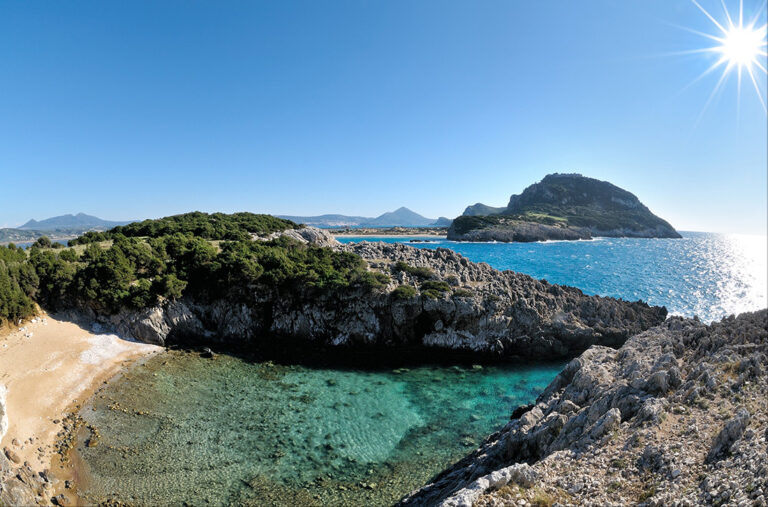If you visit the archaeological site of Peristeria, don’t miss the small ravine called “The Ravine with the Stalactites”. It is another “jewel” of Trifylia and can be reached heading right from the archaeological site of Peristeria to the north and walking for about 20-25 minutes. This old path used to serve the needs of the farmers of the nearby villages and is now filled with strawberry trees, maple trees and kermes oaks. At the junction, the sign indicates that the road to the ravine is to the left. The initial upward gradient turns to a descent which ends at a landscaped area with a bridge, stone walls and a spring. This is the ravine’s starting point, and although it is just a few dozen meter long, it is very impressive both in terms of beauty and as a sight. Its entrance, as well as most of its inside walls, are so narrow that you can touch simultaneously both side walls by just opening your arms. The color of the walls is at some parts dark green from the moss, and at other parts red from the various rocks. The river’s bank is flat and sandy, while the water is quite cold but its level is low (so wear the appropriate clothes and be prepared). Next, there is a cavernous L-shaped space, 11-meter long, with an impressive stalactite décor and fine acoustics. From there, the water of the Arcadian river (or Peristeria) gradually deepens and reaches up to the chest, while a narrow meander leads to a beautiful 8-meter high waterfall and to a small pond. For the bold, the climb behind the waterfall leads to the upper part of the ravine… The small river with the many names, springing for the northwest of the village Aetos and emptying south of Kalo Nero, has an important presence and significance to the local ecosystem. Its total length is merely 20-22 kilometers and some historic accounts mention that, during antiquity (at least between the 5th and 3rd centuries) it was navigable at some points, and facilitated the crossing of small ships for the military operations of the Spartians and others. It is a beautiful biotope, full of rare fish species, small dogfish, eels, waterhens and shelducks. Respectively, the flora surrounding it is very rich and requires protection…




